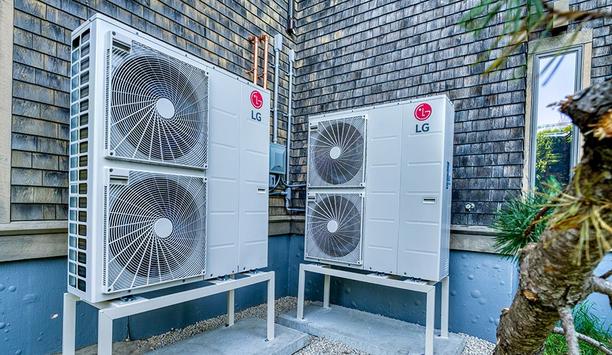With summer well and truly here, many of us are relying heavily on air conditioners for relief from the heat. Among the numerous cooling options available, add-on air conditioning units have been gaining increasing attention – and for good reason!
The two main benefits of add-on air conditioning include a cheaper installation than a brand-new ducted system and a lower running cost than multiple split systems. So, let’s take a look at how add-on air conditioning units work, what applications they’re best for and some frequently asked questions.
How Do Add-On Air Conditioning Units Work?
To put it simply, the outdoor cooling unit draws in heated air and uses refrigerant to cool the air. This cooled air is then circulated through the existing ductwork, effectively cooling the air inside the home.
One of the best ways to understand how add-on air conditioning units work is by visualizing them as an extension of the current heating system. They utilize the existing system’s ductwork, making them not just cost-effective but also a less disruptive option.
Outdoor unit
This unique integration allows add-on units to function as a part of the existing heating system
At the heart of the system is an outdoor unit. It cools air and then sends it through the existing ductwork, which carries heated air in the cooler months. This separates add-on units from split systems and window units.
This unique integration allows add-on units to function as a part of the existing heating system rather than an isolated unit.
How Effective is Add-On Air Conditioning?
The effectiveness of these units is largely determined by their unique ability to ensure uniform cooling throughout multiple rooms.
This is achieved by their integration with the existing ductwork, which allows them to distribute cool air evenly, creating a consistent temperature throughout the entire house.
Split systems
To understand this better, let’s compare them to split-system air conditioners, which are another popular choice among homeowners. Split systems, while effective in their own right, operate independently.
This means that each unit is responsible for cooling a specific area or room. While this may work well for smaller homes or spaces, in larger homes with multiple rooms, this could lead to uneven temperature regulation.
Add-on air conditioning units
The use of a single outdoor cooling unit that sends cool air through the same ductwork
On the other hand, add-on air conditioning units work together with the home’s existing heating system. The use of a single outdoor cooling unit that sends cool air through the same ductwork used for heating ensures seamless and efficient cooling.
This integrated approach to temperature regulation is what helps add-on units maintain a more consistent temperature, making them a superior choice for larger homes.
Choosing a cooling system
However, it’s worth noting that effectiveness isn’t the only factor to consider when choosing a cooling system. While add-on air conditioning units shine in terms of uniform cooling, they might not be the best choice for everyone.
For instance, if the user has a smaller home or the home does not have existing ductwork, installing and operating an add-on unit might not be the most cost-effective or efficient solution.
How Expensive is Running an Add-On Air Conditioning Unit?
Before landing on a decision, consider the financial implications of installing an add-on air conditioner.
Although the initial cost may seem steep and is often a deterrent for many, it’s worth noting that long-term savings can be significant, and the benefits far outweigh the initial expense.
Seamless integration
This integration is a salient feature that distinguishes it from standalone units requiring separate ductwork
An add-on air conditioning unit integrates seamlessly into the existing heating system. This integration is a salient feature that distinguishes it from standalone units requiring a separate ductwork installation.
Consequently, the money the user might have spent on additional ductwork is saved. This factor alone leads to a considerable reduction in both the installation and operational costs, making the add-on units a cost-effective solution in the long run.
Financial benefits
However, it is crucial to mention that these financial benefits are not universal but largely depend on the specifics of the home. For instance, homes that already have a ducted heating system can appreciate these savings more readily.
On the other hand, if the home lacks existing ductwork, the initial cost could potentially rise due to the necessity of ductwork installation. This scenario is particularly applicable to older homes or those with unique architectural features that might complicate the ductwork installation process.
Cost savings
In addition to the cost savings on installation, add-on air conditioning units also offer operational cost benefits. They have been noted for their energy efficiency, which translates into lower monthly energy bills.
This is due to their ability to leverage the existing heating ductwork, reducing the need for additional power sources or systems. Over time, these savings can accumulate to a substantial amount, offsetting the higher initial cost.
Deciding on Add-On Air Conditioning: Factors to Consider
The presence of a ducted heating system in the home can make the installation of an add-on air conditioning unit
Before installing an add-on air conditioning unit, take a comprehensive look at the home’s infrastructure and size.
The presence of a ducted heating system in the home can make the installation of an add-on air conditioning unit a more seamless and cost-effective process.
Size of the home
The size of the home is another factor to consider. These add-on units can prove to be a financially sound decision for larger homes. Larger homes often consist of multiple rooms, which if cooled separately using independent cooling systems, can lead to skyrocketing energy bills.
The use of add-on air conditioning units means uniform cooling via the existing ductwork, ensuring a balanced temperature throughout the entire home, thereby making it a financially and functionally viable option.
Potential downsides
However, it’s also important to consider the potential downsides of add-on units. For smaller homes or those without existing ductwork, the installation of add-on units may not be the most economical or efficient choice.
Smaller homes might not require the extensive cooling capacity these units provide, and the absence of ductwork could mean incurring additional installation costs.















